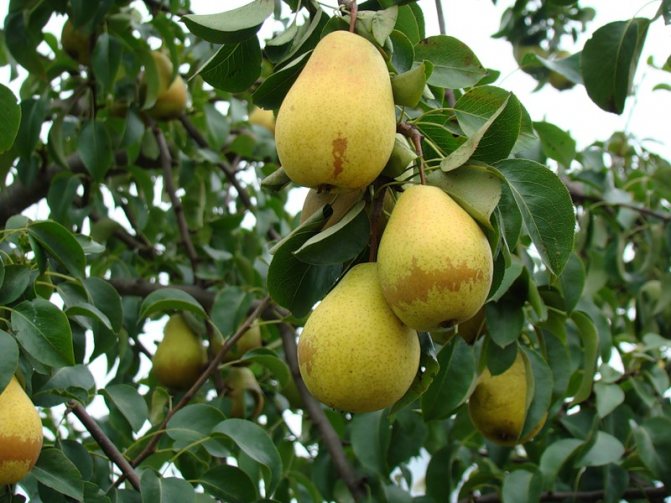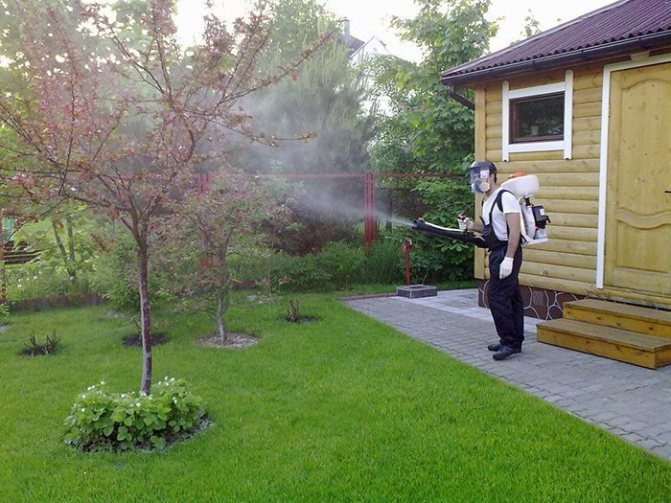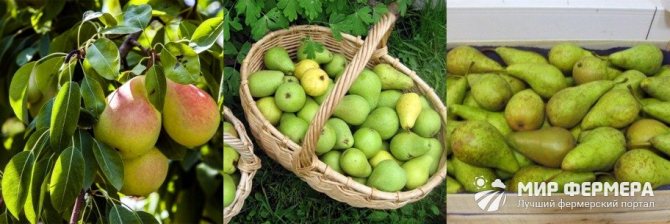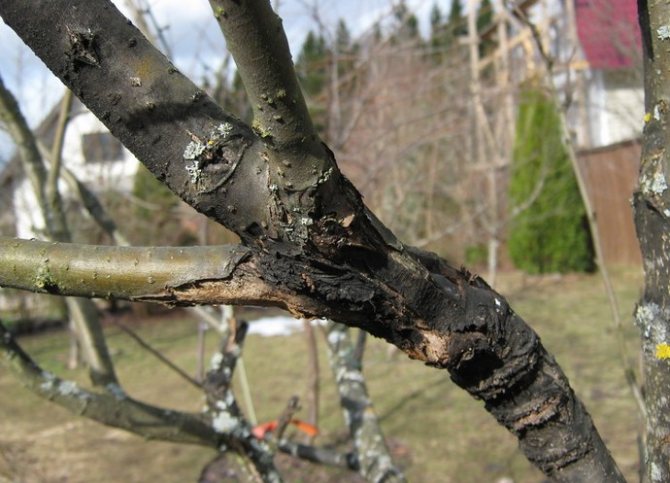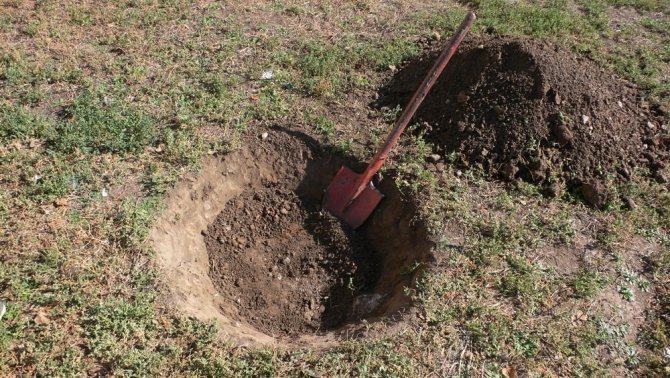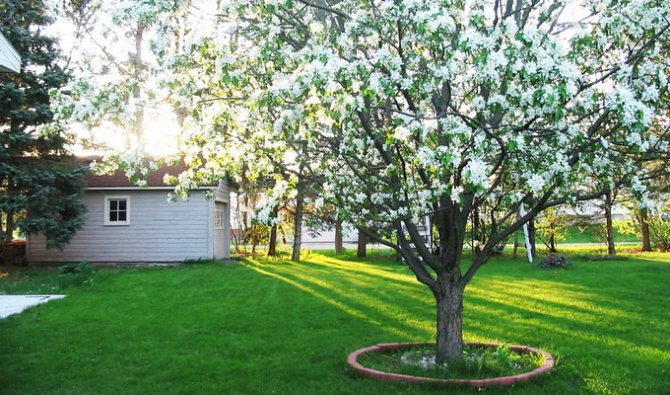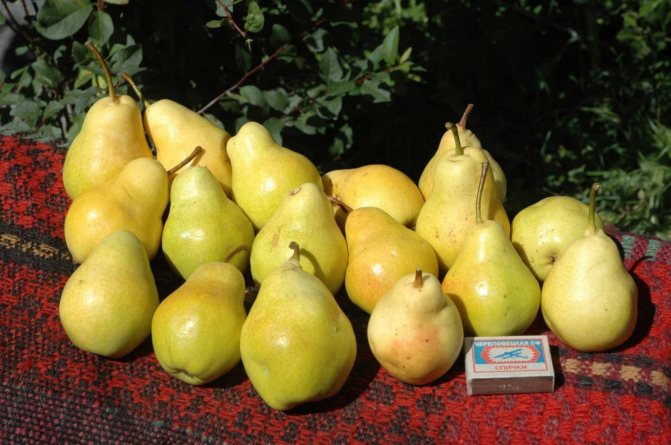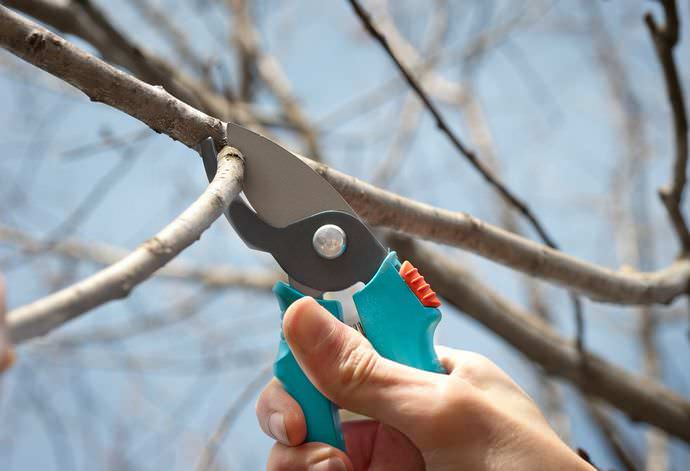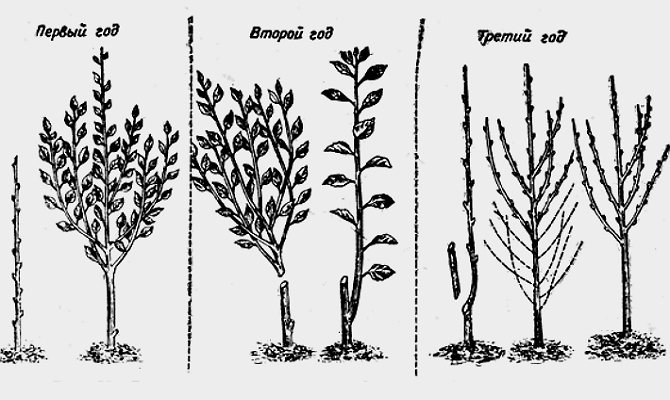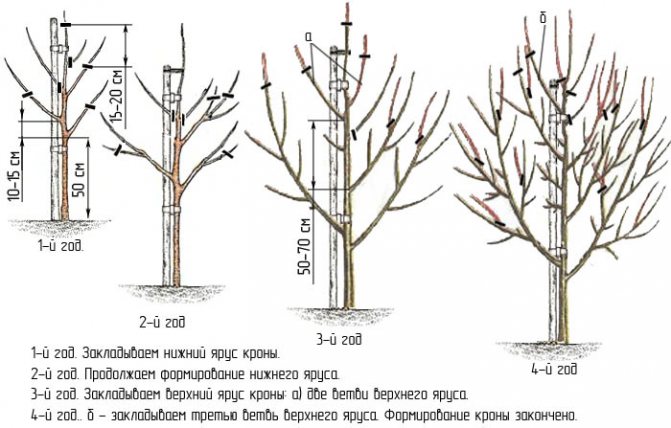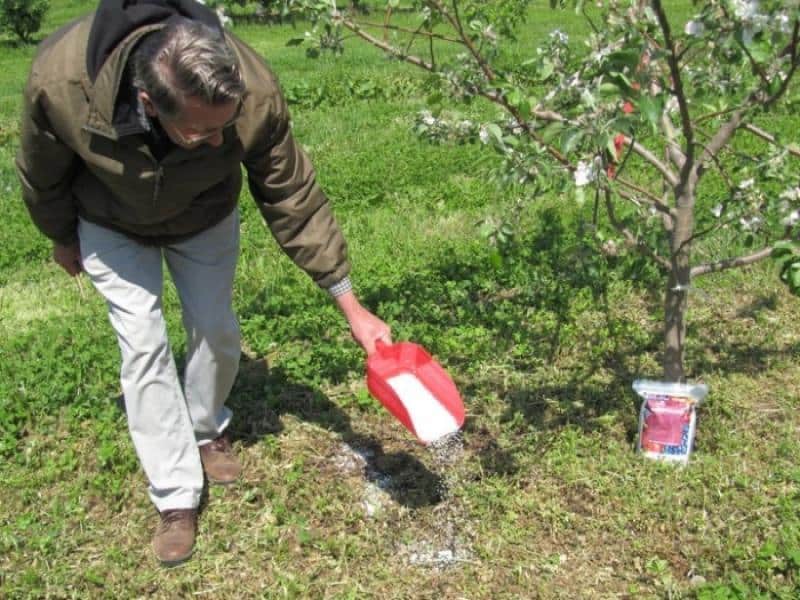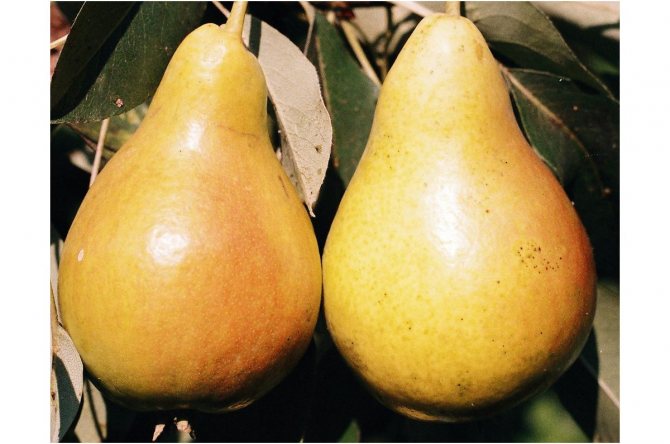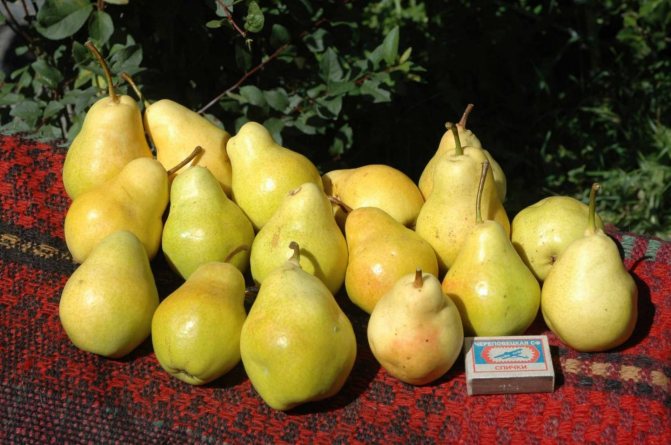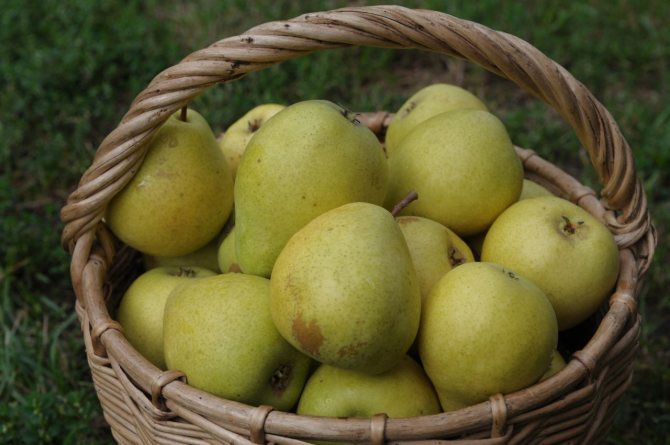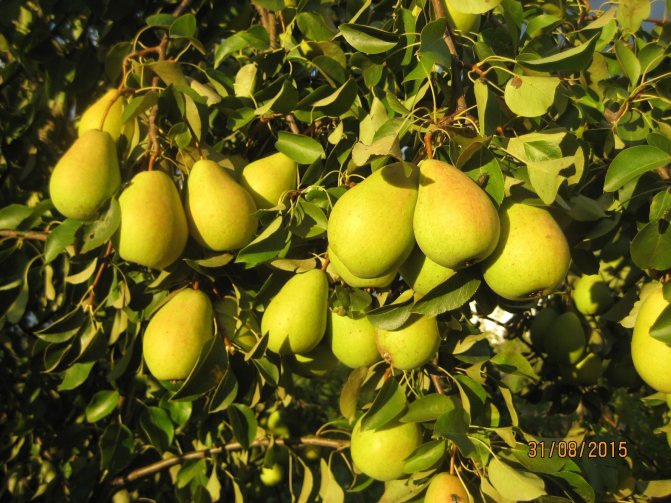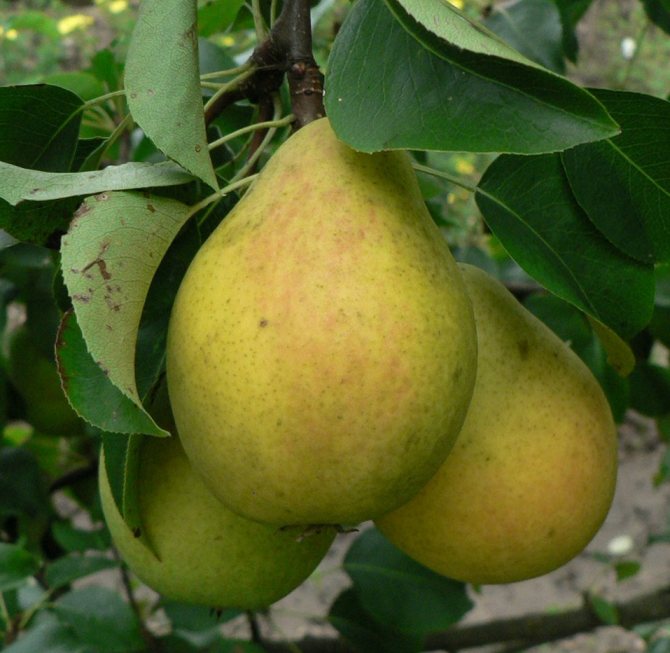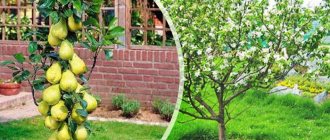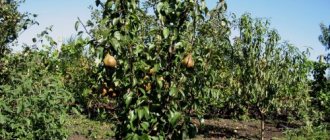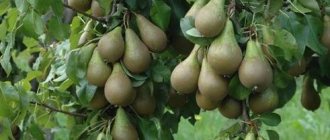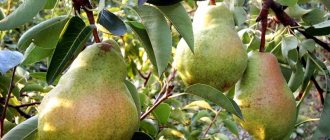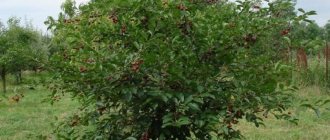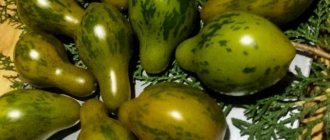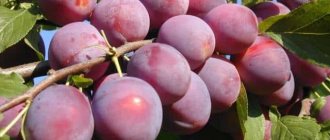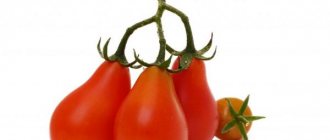The Chizhovskaya pear variety was bred at the Timiryazev Agricultural Academy. Scientists Chizhov and Potapov crossed the Forest Beauty with Olga, as a result of which they got compact, beautiful trees that are resistant to diseases and give tasty fruits. By the way, pears of the Chizhovskaya variety are stored quite well, so they can be consumed fresh for a long time. The species was zoned for the North-West, Central, Middle Volga regions, most often it is grown in the Moscow, Samara, Vladimir regions. From this review, you will learn about the rules and timing of planting pears, the basics of caring for them.
Description of the variety

The main advantage of Chizhevsky's pear is its delicious fruits. They have a classic pear-shaped shape, the weight of each fruit is 100-150 g.
The surface of the pear is smooth, matte, the skin is thin and dry. There are small subcutaneous dots on the surface. Ripe fruits have a yellowish-green hue. Some areas of the fruit are covered with a pale pink blush. There is a slight coating of rust on the fruits. The peduncle is short, of medium thickness. Each fruit has 5 to 10 brown seeds in its core.
The pulp is light yellow, almost white. Its structure is dense, semi-oily, medium juiciness. The pear melts in the mouth, the taste is refreshing, sour-sweet (tasting rating - 4.2 / 5), the aroma is delicate, barely perceptible. The pear has an attractive presentation. The variety is often grown for sale.
The height of the tree reaches 1.8-2.5 m in height. The color of the bark is dark gray. The foliage density is average, at a young age the crown is narrow, and by 4-5 years it acquires a pyramidal shape. Leaves are medium in size, elongated-oval, elongated. The leaf blade has a smooth elastic surface, no pubescence.
The flowers are small, cupped in shape. The petals are medium closed, the buds are white. Each inflorescence has 5 to 7 flowers.
Grushe Chizhovskaya needs pollinators. This variety sets fruit when cross-pollinated. To obtain consistently high yields, pollinating trees are planted at a distance of 4-5 m, which are the varieties Lada, Severyanka and Rogneda. However, the Chizhovskaya pear can bear fruit alone.
Harvesting and storage
For transportation or long-term storage, the fruits must be harvested at the stage of technical ripeness.... Overripe and damaged pears are discarded and recycled.
Fruits are laid, reworked with paper, in dry wooden boxes with holes for ventilation and taken out to the basement or cellar. The room temperature should be from 0 ° С to + 2 ° С, and the humidity should be 80–90%. In such a microclimate, the harvest is well preserved for 2–4 months. To prevent pear fruits from losing their taste and aroma, it is advisable to keep them separate from other vegetables and fruits.


Taking care of trees gives tangible results in the form of excellent fruits
Gardeners who are well acquainted with the Chizhovskaya pear note the pickiness and persistence of this variety. With proper tree care, they will regularly delight their owners with yields of tender and juicy fruits.
Yield


Pear Chizhovskaya belongs to the early-growing varieties. The tree gives a harvest already 3-4 years after planting.The yield per tree with proper care is 50-60 kg of pears.
The fruits can stay on the tree for a long time. It is interesting that fully ripe pears are not damaged when dropped on a grassy litter; they can be stored on the ground for a week, retaining their presentation and taste. Fruits fall in a heap, as they grow on branches, 4-5 pieces side by side. The first crop is harvested at the end of August.
The variety has a feature that is not very pleasant for gardeners: with age, the fruits on the tree become smaller. Instead of 100-150 g (at the beginning of fruiting) for about 10-15 years, the fruits will weigh only 70-80 g. The explanation is simple - a lack of fertilizers due to an increase in the vegetative mass of the tree. The plant must be fed in a timely manner and properly cut.
The characteristic of the fruits allows them to be transported over long distances without losing their presentation and taste. They are stored at zero temperature with a humidity of 85-90% in boxes for 3-4 months. The fruits are universal: they are suitable for fresh consumption, they are used for making jams, marinades, juices and compotes.
What kind of pear does it belong to?


Variety entered in the State Register since 1993 and is one of the most popular in Moscow region, Vladimir region, in the vicinity of Samara.
Pear Chizhovskaya high-yielding variety, it is necessary to collect the fruits late summer, when not every pear can please you with its fruits.
High yields can also boast: Duchess, Fairy, Bere Bosk, Bere Russkaya and Uralochka.
Testimonials
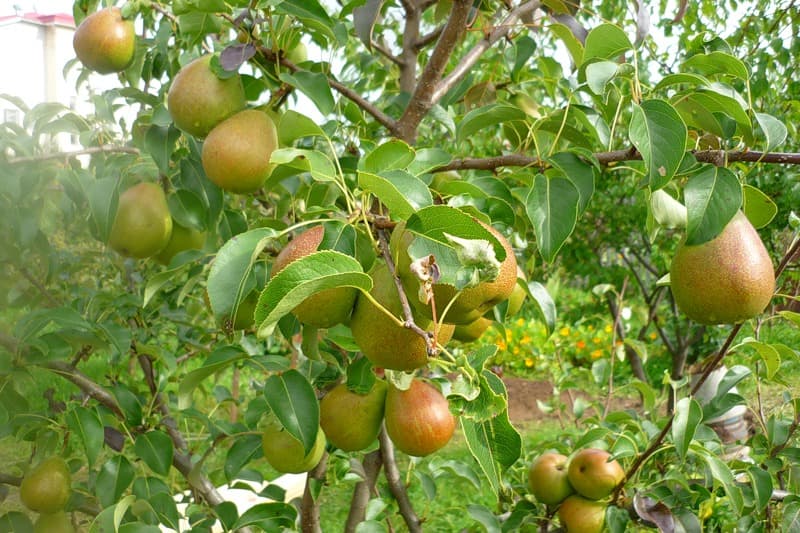

Pear Chizhovskaya bribes gardeners with increased yield, because up to 60 kg of fruit are harvested from a tree! The description of fruits on horticultural forums occurs only in a positive way: in the reviews, gardeners note an attractive presentation, a refreshing sweet and sour taste and a delicate aroma. The fruit is transportable, so it should come as no surprise that many grow the variety for sale.
The tree itself receives good reviews. It is frost-resistant, unpretentious in care, has a high resistance to many diseases (in particular, to scab and fire blight) and common pests. The variety adapts well to heat and can go without water for a long period. The early maturity of the pear is noted - the tree begins to bear fruit already from 3-4 years of development.
The variety has a significant drawback - with increasing age of the tree, the fruits decrease. The situation will be partially corrected by correct pruning, and the plant also needs to be fed in a timely manner. It is also noted that at a young age, the pear does not tolerate droughts.
Basically, the reviews about the variety are positive. Pear Chizhovskaya has a lot of advantages, and it is quite possible to fight with disadvantages on your own. Therefore, this variety quickly spread throughout Russia, becoming one of the most beloved and demanded.
Pear Chizhovskaya: advantages and disadvantages
Pear Chizhovskaya: video about the variety
Pluses of Chizhovskaya pear:
- Rapid fruit ripeness;
- Large amount of harvest;
- Frost resistance of Chizhovskaya pear;
- In appearance - a beautiful fruit;
- High palatability;
- Tolerance to fungal diseases;
- A small amount of fruit falls from the tree;
- The fruit is stable during transportation without losing its presentation.
But with the pluses of the Chizhovskaya pear variety, there are also disadvantages: the fruits become smaller due to the fact that the tree is aging. When the tree is fifteen years old, the weight of the fruit will be from seventy to eighty grams. And a young tree has a fruit weight of one hundred and fifty to one hundred and eighty grams. Do you feel the difference? This can be justified by the fact that an adult tree lacks nutrition and minerals. If you feed a mature tree, then this will somehow improve the situation, but very little. There will be no big changes, since the Chizhovskaya pear tree is already in adulthood.
In addition, the Chizhovskaya pear variety is not resistant to drought, especially when it was just planted, when the roots are developing in the soil. Thus, experts advise to moisten the soil abundantly, but at the same time not to disturb the Chizhovskaya pear tree itself, as well as the leaves.
Possible diseases and pests
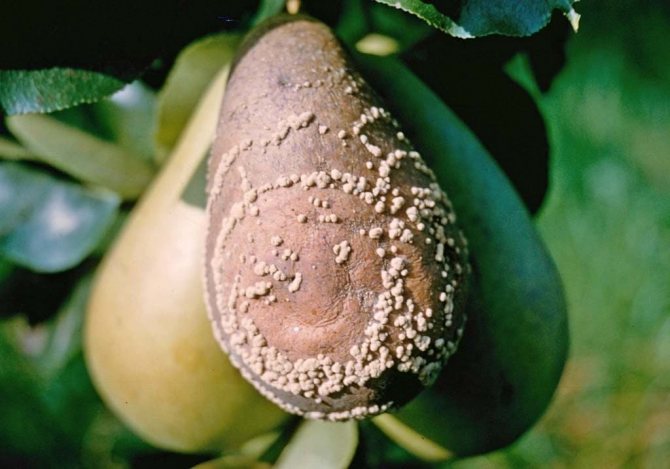

Fruit rot
Pear Chizhovskaya has good immunity to many diseases. But if the agrotechnical standards for growing are violated, the plant can be exposed to some diseases, it can be attacked by common pests.
How to deal with them:
- Fruit rot. This fungal disease develops with high soil moisture. Brown spots appear on the fruits. Over time, they increase, white pads with spores appear on the pear. The flesh becomes brownish and inedible. The fruits must be destroyed, and the tree should be sprayed with Bordeaux liquid. For prophylaxis, in autumn and spring, the plant is treated with a solution of lime (2 kg of substance per 10 liters of water).
- Black cancer. This disease can lead to the death of the tree. Depressed brown-violet spots appear on the bark. They crack and become black. The bark is covered with bumps. The affected areas are removed with a knife (including 2 cm of healthy tissue). Then the sore spots are treated with copper sulfate and sealed with garden pitch.
- Rust. Reddish or orange spots appear on the leaves. The affected foliage is collected and burned. For prophylaxis, after flowering, the tree is sprayed with specialized preparations. After harvesting, the plant is treated with Bordeaux liquid.
- Hawthorn. It is a greyish brown caterpillar with black stripes on its back. The first sign of the appearance of a pest is twisting and drying of the leaves. The tree is treated in the summer with special preparations (Entobacterin, Aktellik, etc.).
- Ringed silkworm. It is a brown butterfly with a wide dark stripe on its wings, whose caterpillars can eat all the foliage. The insect equips the clutches of eggs in the form of a bracelet on the shoots. First of all, it is necessary to destroy the silkworm colonies. Then the plant is treated with Entobacterin.
In order for a tree to grow healthy, it is necessary to buy seedlings only in special nurseries, and agrotechnical standards for planting and growing should also be observed.
Planting and growing
Pear planting scheme:
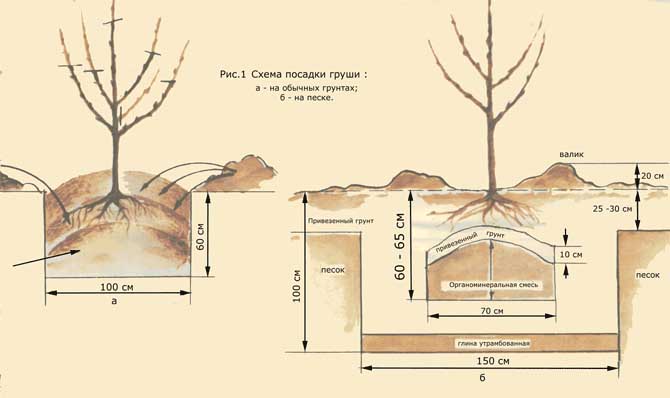

Site selection
Pear Chizhovskaya loves well-lit places with loose, permeable soil filled with nutrients. Groundwater should not approach the surface of the earth closer than 1.5-2 m. If necessary, raise the soil.
Best of all, the Chizhovskaya pear takes root on black soil and loam. This variety loves slightly acidic and neutral soils. Soil with high acidity must be limed, and superphosphate and potassium salt must be added to alkaline soil. These compounds saturate the earth with useful minerals.
Planting is carried out in the fall, immediately after the end of the growing season (in October-November). However, in the middle and northern latitudes, it can be planted in the spring (in April, before the beginning of the growing season). For spring planting, planting pits are prepared in the fall.
Soil preparation
When preparing a site, you should adhere to the following recommendations:
- It is recommended to plant in the fall. In this case, the planting pit is prepared in advance, about a month before planting.
- The depth of the pit should be 80-100 cm, and the width should be about 60-80 cm.
- If the soil is clay, then a layer of drainage of sand, gravel and fine gravel 10-15 cm thick is poured on the bottom.If the soil is sandy, then a layer of clay soil 5-10 cm thick is placed on the bottom.
- Prepare a nutrient mixture. Garden soil is mixed with 2 buckets of rotted manure. A third of a glass of potassium sulfate and 200 g of superphosphate are also added there.
- If necessary, neutralize the soil with appropriate substances.
Planting stages
- In the spring, the procedure is carried out before bud break, and in the fall - after the growing season.
- Before planting, the root of the tree should be immersed in a growth stimulator for 8-12 hours.
- Damaged and dry shoots are removed from the seedling.
- A high and strong stake is installed in the planting hole, to which after planting it will be necessary to tie up a tree.
- A seedling is lowered into the pit in a strictly upright position. Garden soil is poured onto the roots with a layer of 10-15 cm, and then a mixture with fertilizers is placed.
- The root collar should be above the surface at a height of 6-8 cm. The earth should fit snugly to the roots, the soil should be lightly tamped.
- Then 20 liters of water are poured into the pit.
- After partial absorption, garden soil is poured on top. The pit is completely filled, the soil is thoroughly rammed.
- Watering is carried out again with the same amount of water.
- The soil around the trunk is mulched with peat, sawdust or husk.
Variety care


Watering
A young tree needs frequent and abundant watering. In the first 3-4 years of development, the Chizhovskaya pear is very sensitive to droughts. It is watered once a week (however, the intensity of watering also depends on the weather conditions). The soil should be moistened to the full depth of the roots. A mature, rooted tree does not need to be watered as often.
During the season, it is watered 3 to 7 times. This procedure must be carried out before and after flowering, as well as in the autumn. The pear should receive 2-3 buckets of water at a time. After each watering or heavy rain, the ground around the tree should be loosened to a depth of 10-15 cm.
Top dressing
Fertilizers are an important part of caring for the Chizhovskaya pear, especially for mature trees. Young seedlings are fed once a year, in early spring. Rotted manure is suitable as a top dressing. It is poured near the trunk with a layer 4-6 cm thick. Mineral fertilizers (for example, azofoska) can also be added to the humus. Enough 100-150 g of the substance.
The first feeding of an adult tree is carried out during the flowering period. At this time, the plant needs nitrogen-containing fertilizers. Saltpeter is added to the soil. Up to 30 g of this substance is required per square meter. It is mixed with water in a ratio of 1:50.
Fertilizer is applied in a circle around the trunk. Urea can be used instead of nitrate. For 5 liters of water, it is required to dilute 80-120 g of the substance. This amount of solution is designed for one tree.
At the end of flowering, the pear is treated with nitroammophos. 200 liters of water requires 1 kg of substance. Pour up to three buckets of solution under each tree. The next feeding is carried out in the summer, in mid-June. During this period, nitrogen-containing substances are introduced according to the same scheme as in the spring.
In the fall, the pear tree begins to prepare for wintering. During this period, he needs mineral fertilizers. Superphosphate (20-30 g) and potassium chloride (10-15 g) are mixed with water (10 l) and introduced into the near-stem well. This solution is calculated per square meter.
Pruning
The first pruning of seedlings should take place in the spring. The procedure is performed after the air temperature is set at around +8 degrees. When pruning, remember that the lateral branches of the seedling should be located at a height of at least 60 cm from the ground. Their length should not exceed 30-50 cm. The main shoot (trunk) is cut so that it is 20-30 cm higher than the highest lateral branch.
A mature tree is pruned twice a year: in spring and autumn. In the summer, nutrients accumulate in the branches, and when shortened, the tree can lose them. And in cold winter conditions, the damaged areas simply cannot heal. With sanitary pruning, damaged branches are removed, as well as shoots that develop parallel to the trunk, grow at right angles to it or are directed towards the inner side. Pruning is recommended with garden shears, pruning shears or a saw.
Correct pruning can provide the lower tiers with access to sunlight.With its help, the crown of the tree is also formed.
Pear Chizhovskaya: planting varieties


Pear Chizhovskaya: photo of the variety
The soil for the Chizhovskaya pear should be slightly sour. Planting time is spring or autumn. Distributed in many territories.
Attention! In the north or in the middle lane, the Chizhovskaya pear variety should be planted in the spring. Chizhovskaya pear seedlings can be of various kinds, even from undersized ones.
A site for planting pears of the Chizhovskaya variety should be selected and prepared in the autumn. Therefore, it is worth doing the following:
- We make a hole in size from one hundred centimeters in depth, the length and width can be from sixty centimeters.
- Next, you need to add nutrients, crushed stone and manure to the excavated soil. You should also add sulfate - two hundred grams and potassium - a third of the glass.
- If the soil is much acidic, add a lime mortar to it.
- Fill the hole with nutritious soil, moisten with two buckets of water.
As soon as winter is over, you can start planting a crop. This should be done until the kidneys open. The bush for planting should be between one and two years old.
Attention! The date of planting the Chizhovskaya pear may vary, since the climate in the regions is different, therefore, in the northern and middle latitudes, planting can be from the end of March to the end of May. It is important that the soil is warmed up from ten to fifteen centimeters deep.
Planting sequence:
- The first step is to cut dry shoots from the bush. Next, put the Chizhovskaya pear seedling in the hole, distribute the roots so that the culture is comfortable.
- The neck of the roots should be on the surface seven or ten centimeters from the soil. We fill the hole with soil, moisten with water in the amount of twenty liters.
- The hole must be filled with the rest of the earth and tamped.
- Then we moisten the soil in the same way, also with twenty liters of water.
In the south, the Chizhovskaya pear is planted in the fall. This can be done from mid to late fall. You don't have to dig a hole in advance. All this is done at once, the dimensions can be used as in spring, also one hundred centimeters in depth, length and width of sixty centimeters. The first layer is to make compost and charcoal. Then the planting of the autumn Chizhovskaya pear is carried out in the same way as mentioned above.
Pear Chizhovskaya: cultivar pollinators
Fruiting in the Chizhovskaya pear variety is independent. In the neighborhood, there is no need to plant other pollinating crops for the Chizhovskaya pear. But if you want a huge harvest, then you can plant a couple of varieties. The distance between the seedlings of the Chizhovskaya pear should be from three to four meters.
Attention! In most cases, pollinators of Chizhovskaya pears are: "Severyanka", "Rogneda", "Lada".




